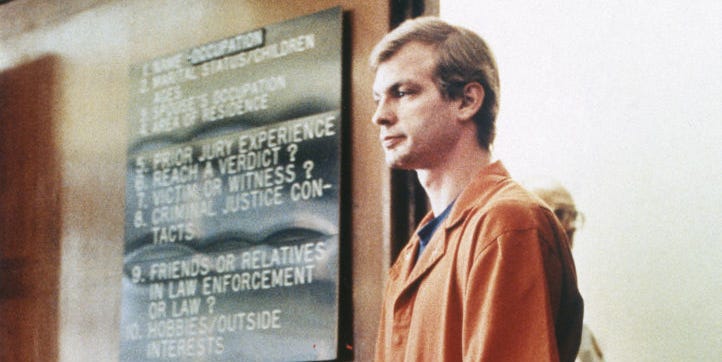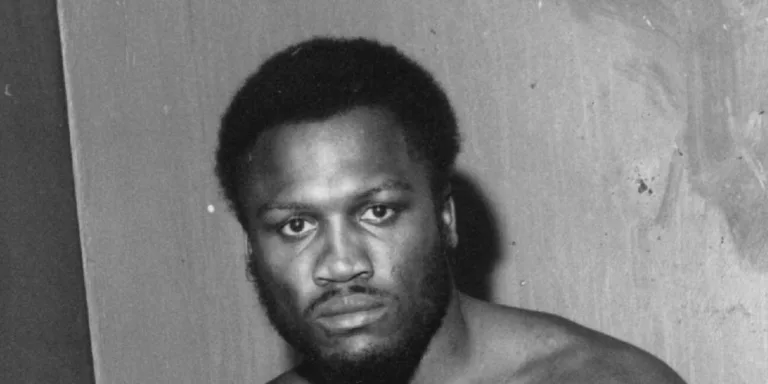Jeffrey Dahmer’s name is synonymous with horror, a chilling reminder of the darkest Depths Humanity Can Reach. Born in 1960, he became one of the most notorious serial killers in American history, responsible for the gruesome deaths of seventeen men and boys between 1978 and 1991. His crimes were not just acts of violence; they were meticulously planned and fueled by a disturbing desire for control and macabre gratification.
Dahmer’s story is a complex tapestry woven with threads of psychological disturbance, Societal Neglect, and the terrifying reality that evil can lurk beneath seemingly ordinary exteriors. Understanding his motivations, His Methods, and the impact of his crimes requires delving into the chilling details of his Jeffrey Dahmer timeline. This exploration will shed light on the trajectory of a life consumed by darkness, ultimately leading to his capture and the unraveling of a horrific truth that shocked the nation.
It is important to approach this subject with sensitivity and respect for the victims and their families. We aim to provide a factual account of Dahmer’s crimes while acknowledging the profound pain They Caused.
Early Life and First Murder
Jeffrey Dahmer’s early life was marked by a sense of isolation and emotional detachment. Born in Milwaukee, Wisconsin, in 1960, he experienced a tumultuous childhood marked by parental discord and his own struggles with social interaction. His fascination with death and bodily functions emerged at a young age, foreshadowing the darkness that would consume him later in life. Despite showing some signs of intelligence, Dahmer struggled academically and socially, often feeling like an outsider.
The seeds of Dahmer’s depravity were sown during his adolescence. He developed a morbid interest in insects and animals, dissecting them to satisfy his curiosity About Their Internal Structures. This fascination with death and decay Would Intensify Over Time, culminating in his first murder in 1978. At the age of 18, Dahmer lured Steven Hicks, a hitchhiker, Back To His Parents’ home under the guise of offering him a drink. After drugging Hicks, Dahmer strangled him, Dismembered His Body, and disposed of the remains in a nearby wooded area. This act of brutality marked the beginning of a horrific killing spree that would continue for thirteen years.
 Famous Grifters: Notorious Con Artists & Their Schemes
Famous Grifters: Notorious Con Artists & Their SchemesModus Operandi and Victims
Dahmer’s modus operandi was a chillingly calculated blend of manipulation and violence. He primarily targeted young men and boys, often from marginalized communities or those struggling with personal issues, making them more vulnerable to his charm and offers of companionship. He would lure them back to his apartment with promises of alcohol, drugs, or even money, carefully cultivating an image of a friendly and approachable individual.
Once inside his apartment, Dahmer’S True Nature Would Emerge. He would drug his victims, rendering them unconscious and vulnerable. Then, he would proceed to strangle them, often savoring the moment as they struggled for their lives. Dahmer was meticulous in his dismemberment of his victims, carefully preserving body parts as trophies or for later consumption. His apartment became a macabre museum of death, filled with human remains, photographs, and souvenirs taken from his victims.
The Jeffrey Dahmer timeline reveals a pattern of escalating brutality over the years. Dahmer’S Crimes Grew Increasingly Gruesome, driven by a insatiable thirst for control and a perverse fascination with death.
Capture and Trial
Dahmer’s reign of terror finally came to an end in July 1991 when one of his victims, Tracy Edwards, managed to escape from his apartment and alert the police. Edwards had been drugged and tied up by Dahmer, but he saw his chance to flee when Dahmer left the room. He ran out into the street, screaming for help, and flagged down a police car. The officers, initially skeptical of Edwards’ story, followed him back to Dahmer’s apartment where they made a horrifying discovery: Dahmer was in the process of Dismembering Another Victim, with body parts scattered throughout the apartment.
The subsequent investigation revealed the full extent of Dahmer’s depravity. Police found human remains hidden throughout His Apartment, Including Skulls, bones, and even preserved organs. The evidence was overwhelming, and Dahmer was quickly arrested and charged with multiple counts of murder. His trial became a media sensation, captivating the nation with its gruesome details and shocking revelations about Dahmer’s Twisted Psyche.
Dahmer pleaded guilty to fifteen counts of murder, admitting his guilt in a chillingly Detached Manner. The judge sentenced him to fifteen Consecutive Life Sentences, totaling 957 years. He was incarcerated at Columbia Correctional Institution in Portage, Wisconsin.
Imprisonment and Death
Dahmer’s imprisonment was a period of intense media scrutiny and public fascination. He became a subject of numerous documentaries and books, his name synonymous with horror and the darkest aspects of human nature. While incarcerated, Dahmer expressed remorse for his crimes but also showed signs of continued Psychological Disturbance. He participated in therapy sessions and engaged with prison officials, attempting to understand the roots of his actions and seeking some form of redemption.
However, Dahmer’s life behind bars was ultimately cut short on November 28, 1994. He was murdered in his cell by Christopher Scarver, a fellow inmate who claimed he acted out of disgust for Dahmer’s crimes. Scarver struck Dahmer repeatedly with a Metal Bar, Causing Fatal Injuries. This tragic end to Dahmer’s life brought a sense of closure To Many, but it also served as a reminder of the profound impact his crimes had on society and the enduring fascination with true crime stories.
The story of Jeffrey Dahmer remains a chilling example of the depths of human depravity and the complex factors that can contribute to such Horrific Acts. His Jeffrey Dahmer timeline, from his early life to his imprisonment and death, serves as a stark reminder of the importance of understanding mental health issues, Addressing Societal Inequalities, and working to prevent similar tragedies from occurring in the future.
Legacy and Impact
Dahmer’s legacy is a complex and Multifaceted One, marked by both horror and reflection. His crimes shocked the nation and sparked widespread debate about mental health, Societal Responsibility, and the nature of evil itself. The Jeffrey Dahmer timeline, Detailing His Descent Into Darkness, serves as a chilling reminder of the fragility of human life and the potential for violence that lurks Within Us All.
His case also highlighted systemic failures in addressing mental health issues and the lack of support available to Vulnerable Individuals. It raised questions about how society can better identify and assist those who may be at risk of harming themselves or others. Dahmer’s story continues to be studied by psychologists, criminologists, and sociologists, providing valuable insights into the motivations behind violent behavior and the factors that contribute to its development.
Despite the horrific nature of his crimes, Dahmer’s case has also prompted important Conversations About Empathy, forgiveness, and the possibility of redemption. His own attempts at self-Reflection During His Imprisonment, while complex and controversial, offer a glimpse into the internal struggles of someone grappling with the consequences of their actions. Ultimately, Dahmer’s legacy serves as a potent reminder of the need for compassion, understanding, and continued efforts to prevent future tragedies.










